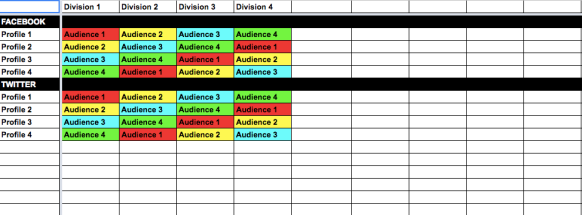Something decidedly not-great is happening at the L.A. Times. Sunday night it was announced (apparently publicly before staff was informed) that a new Editor-in-Chief had been named who comes from parent company Tronc’s business side. That comes after a week where the Times’ newsroom has been trying to figure out what’s going on with all sorts of new hires who have editorial titles but who don’t fit into any existing editorial workflow and who, again, all seem to be reporting into Tronc’s business side.
Fears among Times’ staffers are that Tronc is building a “shadow newsroom” of new hires who are there to replace them after having voted to unionize a couple weeks ago. If that turns out to be the case, Tronc would be just the latest company to dismantle a news organization after unionization, shifting to a model that dissolves the editorial/advertiser wall and relying on unpaid contributors for content.
Media
Director Damien Chazelle becomes the latest big-name talent to sign on to produce an original series for Apple, though the company still hasn’t offered any details on how it’s going to distribute these shows, how much it will cost, where it will be available or when it will launch.
A new deal with Chinese media company ByteDance will see content from many of Buzzfeed’s sites and brands distributed in that country, clearly a decision based on the mounting ad revenue and other issues facing Buzzfeed.
ESPN is hoping all the young people who are cutting the cord and eating into its revenue will turn out for a new fan-driven “First Take” show on Facebook Watch that will bring one citizen commentator on to share their opinions. The timing is sketchy on this because CNN just announced it was shutting down Beme, an app it acquired a couple years ago, that had a similar concept in inviting people to share their opinions on the stories of the day.
The expiration of Nate Silver’s contract with ESPN later this year could mean the future of FiveThirtyEight, the blog he founded and still manages after selling to the cable network, is up in the air.
Look, it’s great that Self has found new success on Snapchat that apparently outstrips what it had in print (before folding that operation) as well as what it sees on its website. My question is this, though: What’s the long-term plan? When Snapchat is no longer the hip place to be, what happens? Migrating all those people over to another platform will take time and basically be a “from scratch” operation, with little of the existing value surviving the transition. This is the core problem with distributed media and one I just can’t reconcile in my mind.
Content Marketing
The Interactive Advertising Bureau has released new guidelines meant for both publishers and marketers to help them both get the most out of their influencer marketing efforts and avoid any ethical potholes they might fall in.
I understand it’s more or less the height of navel gazing in the social media content marketing industry, but I do enjoy a good brand-to-brand conversation on Twitter. A lot of them are forced and unfunny, but a recent exchange between Wendy’s and Moon Pie, to brands known for their strong original voices, is lots of fun.
Community managers (often a term poorly applied to social media specialists) have been wrongly undervalued for too long, a symptom of companies (still) not getting how strategic you have to be when it comes to content marketing executions. While this story argues their role will become more demonstrably important in the wake of Facebook’s recent News Feed changes I’m skeptical. If someone doesn’t get it by now, this isn’t going to change their mind.
Social Media
Because “innovation” doesn’t actually mean anything anymore, Twitter is hoping copying the video-sharing functionality of Snapchat will help it lure and retain younger users.
TV show conversations happening on Instagram will now be tracked by Nielsen, which already does so for Twitter and Facebook. The idea is to give networks and studios a more comprehensive view of the activity around and engagement with their programming, all of which can be used to determine a show’s fate.
Sponsored Moments on Twitter are being called “new” but it’s really just an iteration on the Promoted Moments ad unit that was introduced back in 2015.
It’s been widely-shared already, but I can’t recommend this investigation into how people’s social media profiles are cloned and sold by the gross to those looking to artificially boost their Twitter follower count enough. The interesting tag-along, at least for those of us here in the Chicago area, is the Sun-Times decision to halt publishing Richard Roeper’s work after his name appeared at the top of the list of media people with fake followers. I understand the desire for accuracy by the paper, but this seems poorly thought out. 1) Doing so for Roeper means they should, by all rights, conduct the same investigation into the social media accounts for all their writers and editors. 2) I’m not so sure any media organization wants to look too deeply at *any* numbers since they usually bristle when someone suggests auditing their online ad traffic or print circulation. This is a conversation they don’t really want to have.
“Local news” is the next topic Facebook says it’s going to prioritize in the News Feed, which is fine if you ignore or overlook how Facebook sucking up all the ad revenue in the industry has killed many local news sources AND that the general degradation of news means this doesn’t really amount to much of a statement.
Technology
It seems like I say the same thing every week, but I’m having a hard time coming up with a worse idea that the reported consideration by the Trump administration to either build their own or nationalize the 5G network being built by wireless companies. It’s not just my dislike of the current administration, either. Government ownership of communications channels is to be avoided under any president. There are so many terrible scenarios that could play out from such a situation it’s hard to wrap my head around them. Officials have denied any such plans are in the works, which isn’t the same as denying they’ve been considered.
Child development experts want Facebook to pull its Messenger Kids app, which is meant for those under 13. Facebook says it just wants kids to be able to communicate with their parents and other trusted adults but at the same time doesn’t want them to do so on any platform or tool that’s not part of Facebook.
Seems podcast publishers are actually getting some useful data out of Apple’s new metrics offering.
Want even more recommendations? Check out my Pocket Shared Items.
Chris Thilk is a freelance writer and content strategist who lives in the Chicago suburbs.
Like this:
Like Loading...






